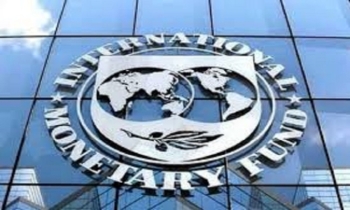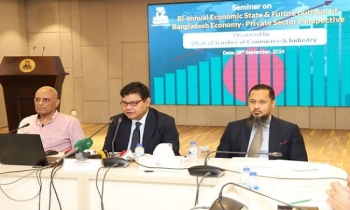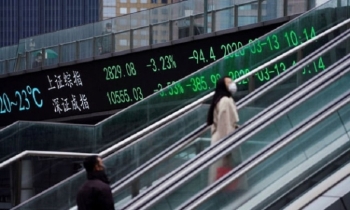ADB raises economic growth forecast for developing Asia, Pacific
BI Desk || BusinessInsider

Representational photo
The Asian Development Bank (ADB) has raised its economic growth forecast for developing Asia and the Pacific this year, amid solid domestic demand and continued strength in exports. ADB has also lowered its forecast for regional inflation.
The ADB, however, said in Bangladesh GDP is now expected to grow by 5.1% in FY2025, which is lower than projected in April 2024 to take into account adverse effects of political unrest in July and August and recent floods, reports BSS.
The region is forecast to grow by 5.0% this year, compared with a projection of 4.9% in April, according to Asian Development Outlook (ADO) September 2024, released today.
The forecast for next year is maintained at 4.9%. Inflation in developing Asia and the Pacific is expected to ease further to 2.8% in 2024, compared with a previous forecast of 3.2%.
Bangladesh recorded GDP growth in FY2024 lower than earlier expected. These results came as reduced export demand and domestic energy shortages took their toll on industrial growth, and as adverse weather constrained agriculture.
Further, fiscal and monetary policies are expected to be tight, subduing consumption and investment demand. The forecast is highly uncertain as significant downside risks muddy the macroeconomic outlook.
These risks arise mostly from continuing political uncertainty, an insecure law-and-order situation, and financial sector vulnerabilities.
In Bangladesh, GDP growth was steady in fiscal year 2024, but lower than expected. Demand continued to be held down by elevated inflation, tight global monetary conditions, and other macroeconomic challenges.
Inflation remained elevated due to high commodity and energy prices and currency depreciation. The current account deficit narrowed following a drop in both exports and imports.
Following political unrest and supply disruption, growth in FY2025 in Bangladesh is expected to moderate, but inflation is projected to edge up into the double digits. Restoring and sustaining macroeconomic stability depends on accelerated reforms to raise revenue for a better fiscal balance, stabilize the finance sector through better interest and exchange rate regimes, and diversify the economy.
The outlook said the forecast for subregional inflation in 2024 is retained at 7.0% and increased slightly to 6.1% in 2025.
The upward revision for 2025 reflects mainly higher projected inflation in Bangladesh, which rose to an average of 9.7% in FY2024 because agricultural production weakened, electricity prices were adjusted, domestic fuel prices underwent periodic adjustment under an automated fuel-pricing mechanism, and the currency depreciated.
Inflation is expected to accelerate further to 10.1% in FY2025 with supply-side disruption and higher import costs.
The ADB Outlook said the improved economic outlook reflects stronger-than-expected expansions in East Asia, Caucasus and Central Asia, and the Pacific. Rising global demand for semiconductors, driven in part by the artificial intelligence boom, is boosting exports, while easing global food prices and the lagged effects of monetary policy tightening have brought inflation down to near pre-pandemic levels.
"Strong economic fundamentals will continue to underpin expansion this year and next," said ADB Chief Economist Albert Park. "Financial conditions are expected to improve as inflation moderates further and the US eases its monetary policy, and this will support the positive outlook for the region."
Risks to the outlook include a worsening of trade tensions between the United States (US) and the People's Republic of China (PRC); further deterioration in the PRC property market; worsening geopolitical tensions; and the effects of climate change and adverse weather on commodity prices and food and energy security.
The growth forecast for the PRC, the largest economy in developing Asia and the Pacific, remains at 4.8% this year and 4.5% next year. Lingering weakness in the PRC's property sector has negatively affected household spending during 2024. This has been partially offset by higher investment, underpinned by stimulatory monetary and fiscal policies, and higher exports.
India's economy-the region's second largest-is forecast to grow 7.0% in 2024, unchanged from April, amid strong domestic demand including an increase in government spending.
The growth forecast for the Caucasus and Central Asia has been raised to 4.7% this year, compared with a 4.3% projection in April, thanks to improved domestic demand bolstered by remittances in some economies. The growth forecast for the Pacific has been revised upward to 3.4%, from 3.3% in April, driven by the increase in tourist arrivals. The forecast for Southeast Asia has been lowered by 0.1 percentage points to 4.5%, due to a decline in public investments and slower-than-expected export recovery.
ADB is committed to achieving a prosperous, inclusive, resilient, and sustainable Asia and the Pacific, while sustaining its efforts to eradicate extreme poverty.
























